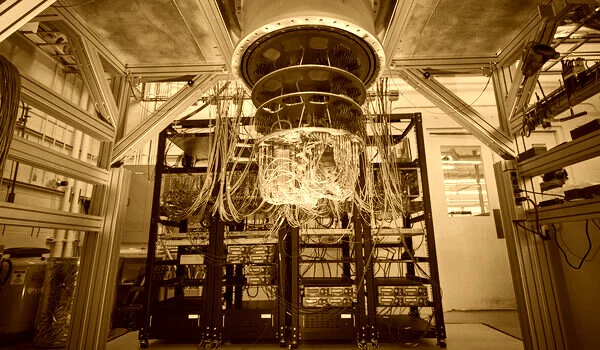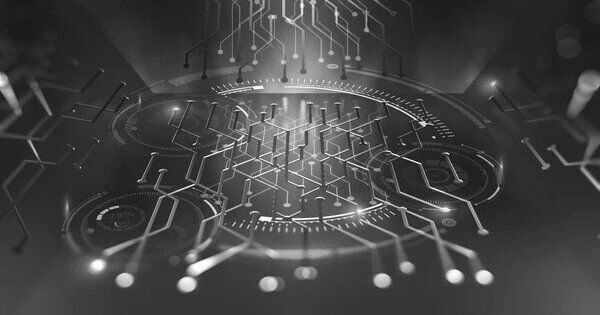Scientists have reached a significant milestone in the advancement of quantum computing. Quantum computing is a new technology that promises a paradigm shift in computing and faster solutions to a wide range of problems. However, quantum devices are still in their infancy, with most having only a few qubits. This necessitates the use of simulation to develop quantum algorithms and test these devices. While there are many algorithms for simulating quantum circuits, there are (at the time of writing) no tools that use OpenCL to parallelize this simulation, allowing it to take advantage of devices such as GPUs while remaining portable.
Quantum computers have the potential to revolutionize science by enabling computations that were previously thought to be impossible. However, there is a long way to go and many difficult tests to pass before quantum computers become a commonplace reality.
One of the experiments involves using quantum computers to simulate material properties for next-generation quantum technologies. Quantum computing has the potential to solve some of our planet’s most pressing problems, including those in the environment, agriculture, health, energy, climate, materials science, and others we haven’t yet encountered. Classical computing is becoming increasingly difficult to solve for some of these problems as the system grows in size.
We want to learn how to use new and emerging computational technologies. Developing robust strategies early in the history of quantum computing is an important first step toward understanding how to use these machines efficiently in the future.
Giulia Galli
Researchers from the U.S. Department of Energy’s (DOE) Argonne National Laboratory and the University of Chicago conducted quantum simulations of spin defects, which are specific impurities in materials that could provide a promising foundation for new quantum technologies, in a new study. By correcting for noise introduced by quantum hardware, the researchers improved the accuracy of calculations on quantum computers.
“We want to learn how to use new and emerging computational technologies. Developing robust strategies early in the history of quantum computing is an important first step toward understanding how to use these machines efficiently in the future.” Giulia Galli, Argonne National Laboratory and University of Chicago.
The research was conducted as part of the Midwest Integrated Center for Computational Materials (MICCoM), a DOE computational materials science program headquartered at Argonne, as well as Q-NEXT, a DOE National Quantum Information Science Research Center.
“We do these kinds of simulations to gain a fundamental understanding of material properties and also to tell experimentalists how to eventually better design materials for new technologies,” said Giulia Galli, a professor at the University of Chicago’s Pritzker School of Molecular Engineering and Department of Chemistry, senior scientist at Argonne National Laboratory, Q-NEXT collaborator, and director of MICCoM. “The experimental results for quantum systems are frequently complicated and difficult to interpret. A simulation is necessary to aid in the interpretation of experimental results and the formulation of new predictions.”

While quantum simulations have for a long time been done on traditional computers, quantum computers might be able to solve problems that even the most powerful traditional computers today can’t tackle. Reaching that target remains to be seen, as researchers around the work continue the effort to build and use quantum computers.
“We want to learn how to use new computational technologies that are emerging,” said Galli, the paper’s lead author. “Developing robust strategies in the early days of quantum computing is a critical first step toward understanding how to use these machines efficiently in the future.”
Examining spin defects provides a real-world system for validating quantum computer capabilities.
“The vast majority of quantum computer calculations these days are on model systems,” Galli explained. “These models are interesting in theory, but simulating a real material of experimental interest is more valuable to the scientific community as a whole.”
Calculating the properties of materials and molecules on quantum computers encounters a problem that classical computers do not: hardware noise. Noisy calculations produce slightly different results each time a calculation is performed; for example, a noisy addition operation might produce values slightly different from 4 each time the question “What is 2 plus 2?” is asked.
“The uncertainty in the measurement is dependent on the quantum hardware,” said Argonne scientist Marco Govoni, co-lead author of the study. “One of our accomplishments was that we were able to correct our simulations to compensate for the noise that we encountered on the hardware.”
Understanding how to handle noise in quantum computers for realistic simulations is a significant result, according to the study’s first author, University of Chicago graduate student Benchen Huang.
“We can expect noiseless quantum computing in the future; learning how to eliminate or cancel noise in our simulation will also teach us whether quantum advantage will become a reality and for which problems in materials science.”
Finally, the groundbreaking potential of quantum computers, according to Galli, will motivate more work in this area. “We’ve only just begun,” she explained. “The road ahead appears to be full of exciting challenges.”
















